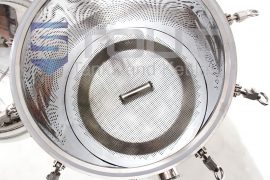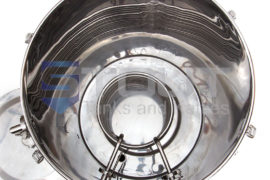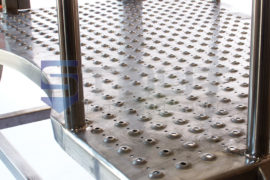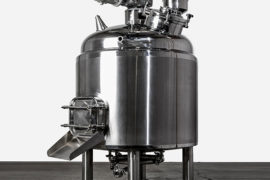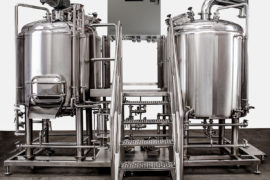Craft brewers are passionately committed to making the highest quality beer they can. The magic happens in the brewery itself, and in many ways, the building defines the brewery. The brewery must fit your space and growing needs as a brewer and there are many important factors to consider when selecting the right space to open your brewery.
At Stout Tanks and Kettles, our Brewery Consultants have over 50 years of combined professional brewing experience and countless years of home brewing experience. We have built over a thousand brewing systems and we understand that a brewery is not just a financial investment, but an investment in yourself and your passion for craft beer. There are many important decisions to make and we want to give you the knowledge you need to make smart choices and set your brewery up for success.
So you’ve made the decision to open a brewery, what now?
Create a Business Plan
Your brewery business plan will determine many aspects of your brewery, including the size and type of building you need. Other important information to consider: Who will your customers be? How much beer will they buy? Will they buy your beer by the keg, the can, the case, the pallet, or the pint glass?
Once you know your beer production goals and your packaging needs, you can focus on finding the right industrial, commercial or retail space to open your brewery. Let us help. Our Brewery Consultants can provide you with free budgetary quotes for different size brewhouses so you can narrow in on a budget and production plan that makes sense for your business and your market. Let’s discuss your options and needs as a brewer so that we can make sure your brewhouse can support your desired brewing schedule and long term needs.
Find a Building for your Brewery
The square footage of your brewery will determine how much beer you can brew and the available storage space. Whether the building has room for a 3 bbl brewing system, 5 bbl brewing system, 7bbl brewing system , 10 bbl brewing system or larger, figure you will need approximately 1 to 1.5 square feet per barrel per year for your production space, excluding a cold room. You will need extra space for cleaning and maintaining your equipment along with dry storage for raw materials.
Our Brewery Consultants will work with you to make sure you have plenty of room for all your tanks, kegs and other brewing equipment, even when they are not being used. We can help you develop a production schedule that uses your space and time efficiently, so you will know how often to brew, package and do cellar work while still leaving time for important administrative tasks.
Select the right Power Supply
Once you have found the right building for your brewery and have chosen a size for your brewhouse, you will need to consider your power supply: Electric, Direct Fire, Indirect Fire, and Steam.

Electric is often the best choice for most breweries under 15 bbls, as they are easier to install. Typically, a 60-225 Amp service will be required for electric brewing systems. We recommend three phase power for breweries larger than 7 bbls, while single or three phase power will work for smaller systems.
If you prefer a direct fire or indirect fire heat source for your brewery you will want to make sure you have properly sized gas supply lines and proper ventilation for both exhaust gases and for make up air. Ventilation can be tricky, and landlords do not typically permit holes in their roofs and walls. If natural gas or propane is not available in the building you have selected, neither a direct fire nor indirect fire heat source will be possible in your brewery.
If you are considering steam, please remember that steam brewing systems are not cost effective below 15 bbls because of the higher cost of the boiler, steam-pipe fitting, permitting, and monthly maintenance. Ultimately, the utilities in your building may lead you one way or another. We are more than happy to discuss your options.

Consider Doorways and Ceilings
You can order the best brewing equipment in the world, but it does no good if you can’t fit it through the doors or under the ceiling. The entryway must be high and wide enough to accommodate your largest brewing vessel with room for rigging and forklifts to move it. If you plan on doing any distributing or want to have ingredients delivered directly to the brewery, look for a space that has a loading dock or plan enough floor space for load in and load out.
If space is an issue, let us know. We can custom-build shorter tanks or narrower tanks to work within the confines of your space.
Don’t forget about Floors, Drains, and Water Supply
Floors are foundational. You can eliminate many brewery building options based on the floors alone. Finding a building with the right floors can save you a lot of money and headaches over time. Floors must be strong enough to support the weight of your beer, your equipment and your operations. Water weighs 8.34 pounds to the gallon and beer weighs a bit more. Work with your landlord early to confirm the weight capacity of the existing floors.
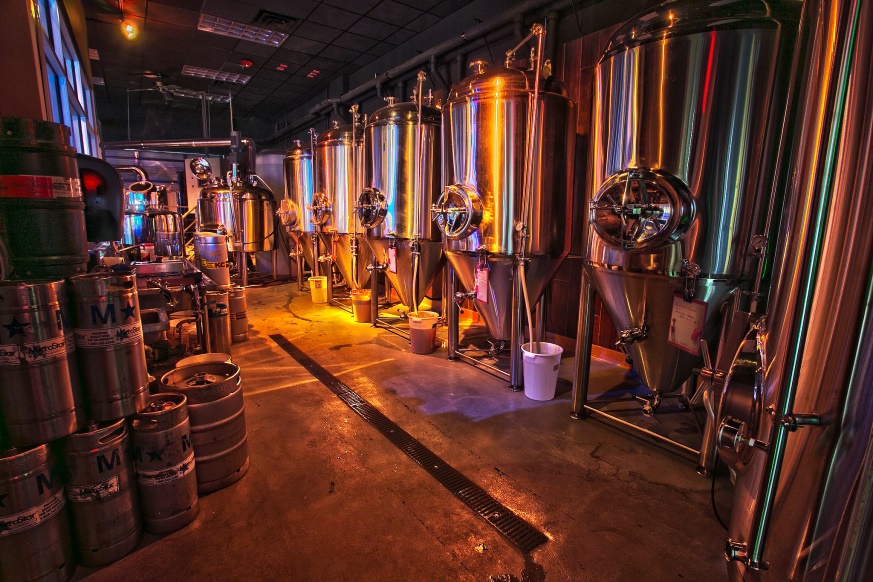 Drains are expensive to install, but necessary for your operation. We recommend floor drains in the brewhouse, the cellar, the kegging/bottling area, and anywhere a spill is likely. Floors should slope ¼” to the foot toward drains. Drains should be large enough to handle dumping your largest tank, or a leak from your water main. The finished surface of the floors is also important. Your floor and wall surfaces must be resistant to both mild acids and strong alkaline. Be well informed by your chemical vendors when you choose the right surface for your floors.
Drains are expensive to install, but necessary for your operation. We recommend floor drains in the brewhouse, the cellar, the kegging/bottling area, and anywhere a spill is likely. Floors should slope ¼” to the foot toward drains. Drains should be large enough to handle dumping your largest tank, or a leak from your water main. The finished surface of the floors is also important. Your floor and wall surfaces must be resistant to both mild acids and strong alkaline. Be well informed by your chemical vendors when you choose the right surface for your floors.
Typically, breweries use anywhere from 4 to 6 times the volume of water as finished product. So for every barrel of beer you plan to produce, plan on using 4 to 6 barrels of water throughout it’s production. Build the cost of water into your business plan, and make sure the water supply at your brewery is adequate. You should have 60-80 PSI on your incoming water supply, and a main supply pipe large enough to fill your tanks quickly. Analyze your water to determine whether you need a filtration system for chlorine or other contaminants in the water supply.
Making your dream of opening a brewery come true requires decisions. From heat source to refrigeration, from your initial production goals to your latest expansion plans, we can guide you. We can work within your budget and within your space, so you can brew the beer you want. Let’s start planning your brewery and get the right system for you.


